unique traditions
Romania's unique traditions are a vibrant mosaic of cultural rituals, folklore, and ancient customs that have been preserved through the ages.
From the colorful spring festival of Mărțișor, marking the beginning of spring with the exchange of red and white trinkets, to the hauntingly beautiful Doina, a traditional form of folk music expressing longing, love, and loss.
The winter holidays bring the mesmerizing practice of colindat, where groups of carolers visit homes to sing and bring good wishes, and the dramatic bear dance and the masked dancers that chase away evil spirits.
Each region of Romania boasts its own distinct customs, such as the painted eggs of Maramureș for Easter, the elaborate weddings in Transylvania, and the vibrant costumes worn during local festivals.
These traditions, deeply rooted in Romania's rural communities, offer a glimpse into the country's rich cultural heritage and the enduring bond between its people and their ancestors.
Ursitoare

The Ursitoare tradition is a mesmerizing Romanian ritual steeped in mythology and magic, marking the celebration of a newborn's fate.
According to legend, three fairy godmothers, known as Ursitoare, visit newborns on their third night after birth, bestowing gifts of destiny upon the infants.
This enchanting ceremony embodies the fusion of ancient Dacian beliefs and Christian elements, illustrating the deep-rooted connection Romanians have with the mystical forces of life.
An interesting fact about this tradition is that each Ursitoare grants a specific gift or prophecy, ranging from strength, beauty, and wisdom to more challenging destinies.
The ritual underscores the community's involvement in a child's life, emphasizing the collective hope for a prosperous and protected future.
traditions for small children
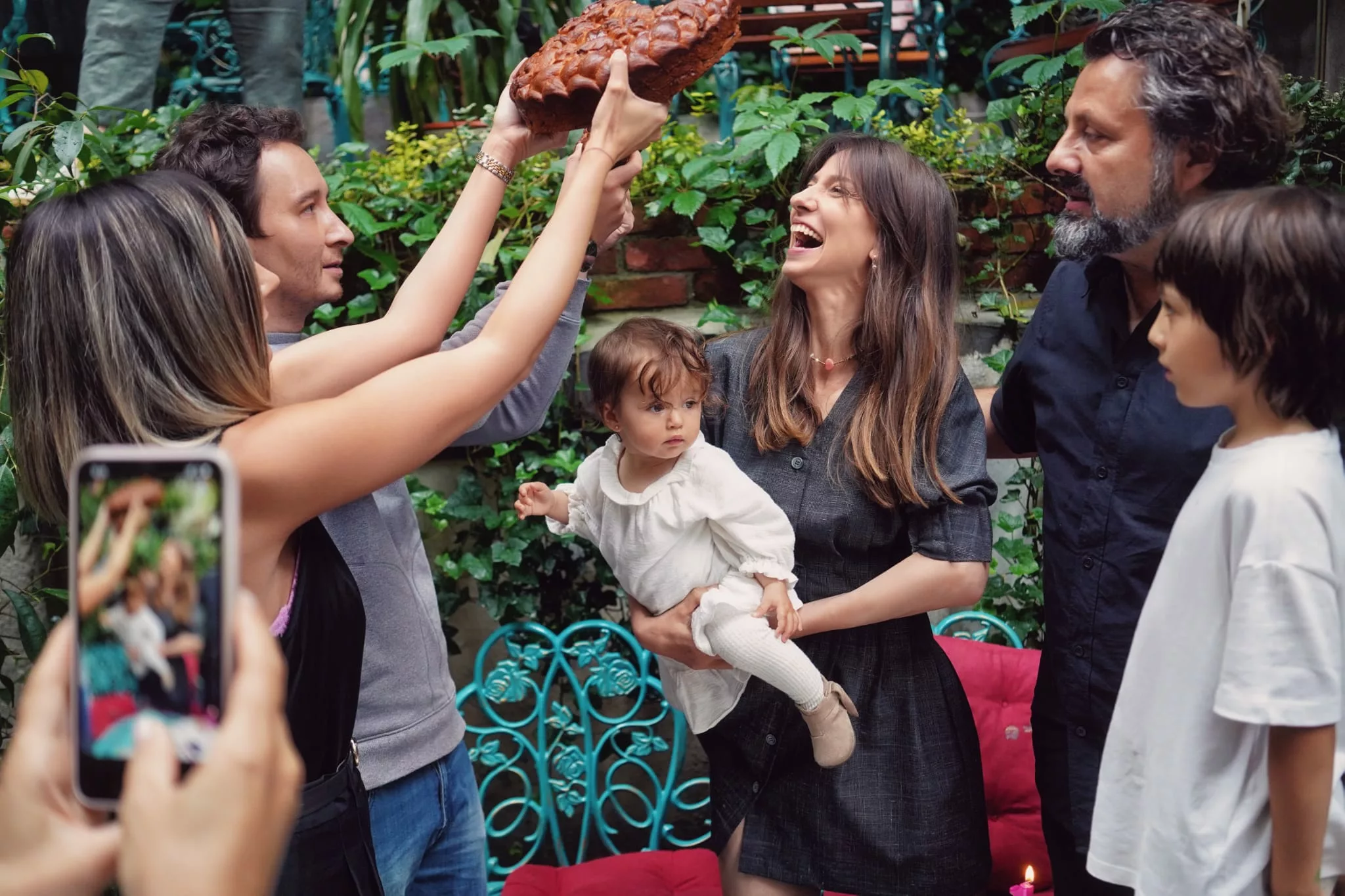
In Romanian culture, "Ruperea turtei" and "tăierea moțului" are cherished rites of passage for girls, celebrating key milestones from infancy.
"Ruperea turtei" involves breaking a special cake over the child's head during her first birthday or baptism to wish for luck, health, and prosperity, symbolizing her integration into the community with grace and care.
"Tăierea moțului" marks the first haircut, often at 9 months or 1 year, symbolizing a step towards femininity; the cut hair, kept as a keepsake, embodies hopes for a virtuous future.
Accompanying these rituals, a plate with various objects predicts the girl's future based on her choice—pencils for academia, thread for longevity, coins for wealth, and thimbles or mirrors for creativity and beauty.
This tradition underscores the family's and community's role in guiding and nurturing her potential, blending hope and cultural heritage in a moment of joy and anticipation.
Wedding Traditions
Romanian wedding traditions are a vibrant tapestry of customs steeped in symbolism and joy, varying from region to region, yet all celebrating the union of two lives.
One of the most evocative customs is the "Ruperea turtei miresei" or "Breaking of the bride's cake," a ceremony that takes place during the wedding feast.
This tradition involves the bride and groom breaking a specially baked bread or cake over the bride's head, symbolizing abundance, fertility, and the breaking of the bride's ties to her family as she starts a new life.
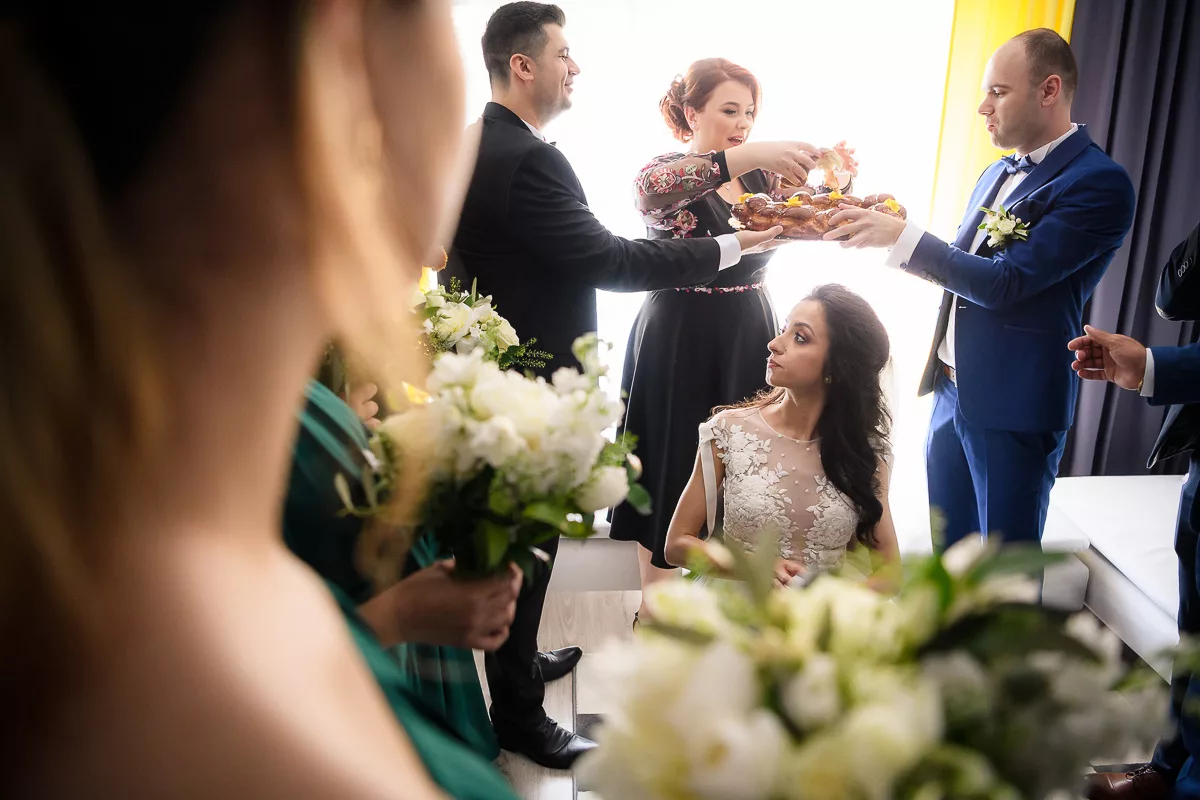
An interesting fact about this tradition is that the cake or bread is often made with symbols of fertility and prosperity, such as grains or coins baked into the dough. After the bread is broken, the pieces are distributed among the guests, spreading the couple's good fortune.
Weddings in Romania are also known for their lively dances, colorful attire, and sumptuous feasts, which can last well into the night or even for several days.
The "hora," a traditional dance that forms a closed circle, is a highlight, symbolizing unity and community.
The bride's kidnapping, another playful tradition, adds excitement as the groom and guests must "rescue" her, often involving tasks or ransom payments.
Maramureș Weddings
Maramureș weddings are a spectacular showcase of Romania's deep-rooted traditions, distinguished by their rich folklore, vibrant ceremonies, and communal spirit.
These weddings are often multi-day events, where the entire village participates, reflecting the strong community bonds and the importance of marriage as a communal celebration rather than just an individual affair.
An interesting aspect of Maramureș weddings is the traditional wedding attire, which is meticulously handmade and embroidered with symbolic motifs.
Brides wear elaborate, colorful costumes and crowns made of natural flowers, while grooms dress in traditional white woolen trousers, embroidered shirts, and straw hats, each element rich in symbolism and heritage.
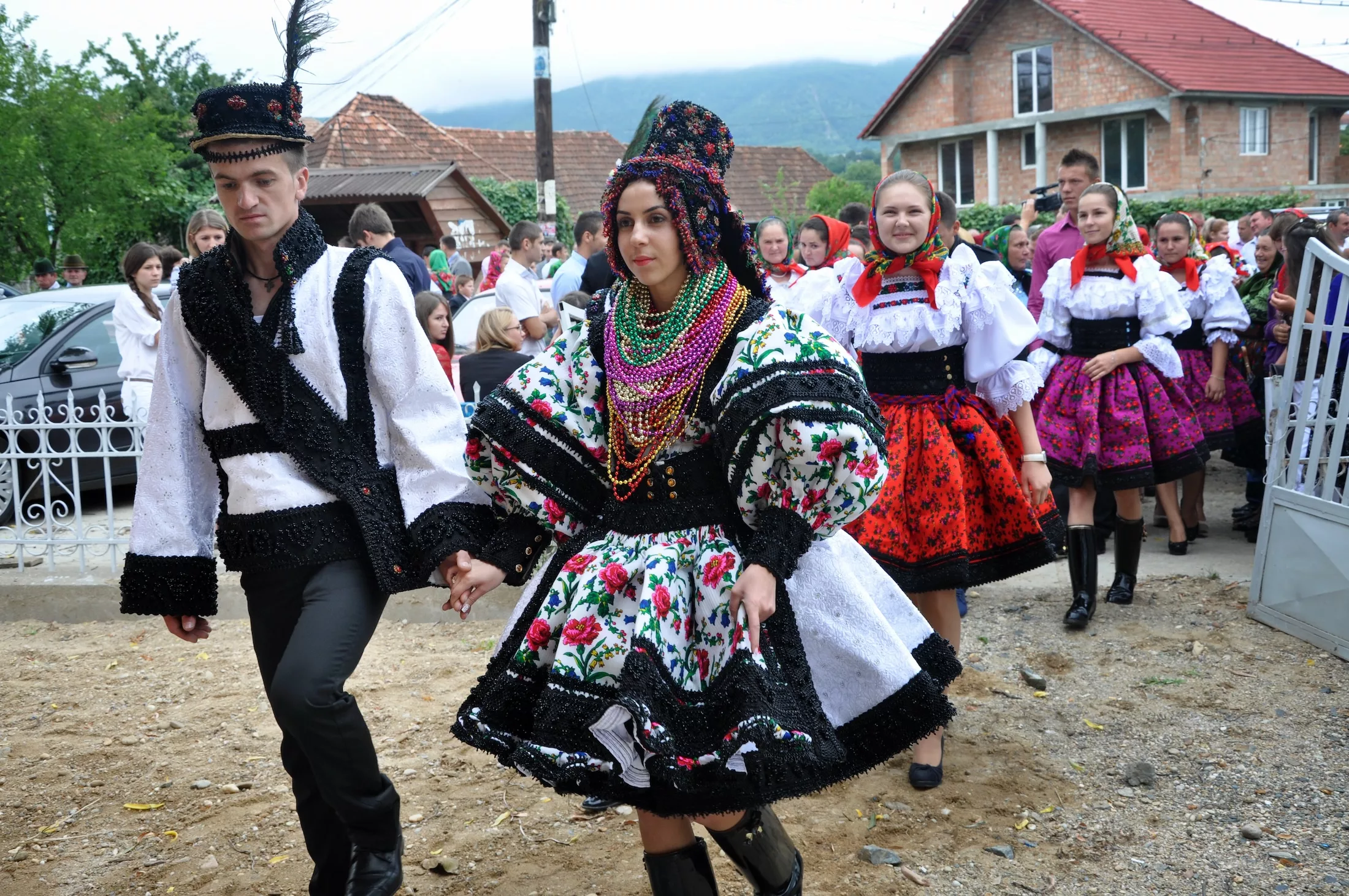
One of the most captivating traditions is the "hora lui sotron," a dance performed at the beginning of the wedding to symbolize the couple's journey through life.
The dance involves intricate steps and patterns, representing the obstacles and joys the couple will face together.
Another unique feature is the "poarta miresei" (the bride's gate), a decorated arch under which the bride is carried, symbolizing her entry into a new life.
The night before the wedding, the "focul viu" (live fire) ceremony takes place, where friends and family gather to create a bonfire, signifying the warmth and light of the couple's future home.
Maramureș weddings are also known for their "ceterasi" or traditional musicians, who play folk tunes that narrate the couple's story, adding a personal and emotional touch to the festivities.
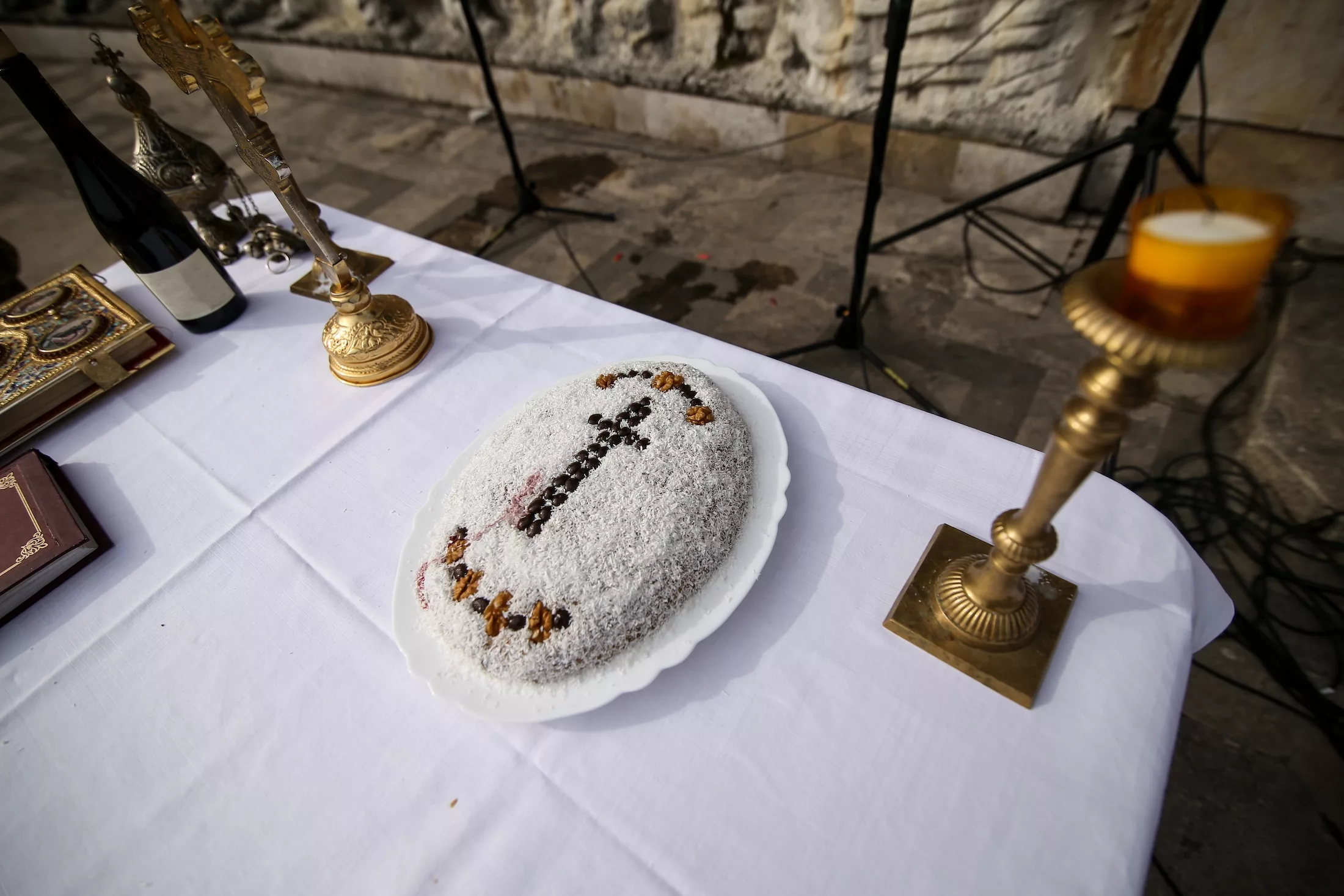
Funeral Traditions
Romanian funeral traditions are deeply symbolic, blending Orthodox Christian rituals with ancient customs that honor the deceased and support the bereaved.
A unique and poignant practice is the covering of mirrors in the house of the deceased, a tradition believed to protect the living from being haunted by the departed soul or to prevent the soul from getting trapped in the mirror, ensuring a peaceful journey to the afterlife.
Coliva, a traditional boiled wheat dish mixed with sugar and sometimes adorned with nuts and candies, is a staple at Romanian funerals.
This ritual food is prepared and shared among attendees as a symbol of life's cyclical nature and the hope of resurrection, according to Orthodox beliefs. Serving coliva is both a tribute to the deceased and a gesture of communal support, embodying the sustenance of life and the sweetness of memory.
Other interesting customs include the all-night wake, or "priveghi," where friends and family gather to keep watch over the body, sharing stories and prayers.
This vigil is a testament to the community's solidarity and respect for the deceased.
Additionally, the procession to the burial site often involves carrying the coffin by foot, accompanied by lamentation songs or prayers, reflecting the communal journey of mourning and farewell.
Sfântul Andrei
Sfântul Andrei, celebrated on November 30th, marks an important tradition in Romania, honoring Saint Andrew, the patron saint of Romania.
This day is rich with customs that blend Christian beliefs and pre-Christian rituals, symbolizing protection, fertility, and the anticipation of winter.
One fascinating tradition is that of young people putting basil under their pillow before going to sleep on the eve of Sfântul Andrei. This practice is believed to induce prophetic dreams about their future spouse, adding a touch of magic and anticipation to the night.

It's a delightful blend of hope, mysticism, and tradition, encapsulating the Romanian people's deep connection to their cultural and spiritual roots.
Sfântul Andrei is also associated with rituals of protection against evil spirits.
Garlic is hung on windows and doors or placed around the house, believed to ward off ghosts or malevolent forces during this time when the barrier between the natural and supernatural worlds is thought to be thinnest.
Colindat
Colindat, the Romanian tradition of caroling during the winter holidays, is a cherished practice that fills homes and communities with joy and good tidings.
Groups of carolers, called "colindători," travel from house to house, singing traditional Christmas carols that tell stories of the birth of Jesus, the changing seasons, and ancient legends. This heartwarming tradition is not only a way to spread holiday cheer but also a means of strengthening community bonds and preserving cultural heritage.
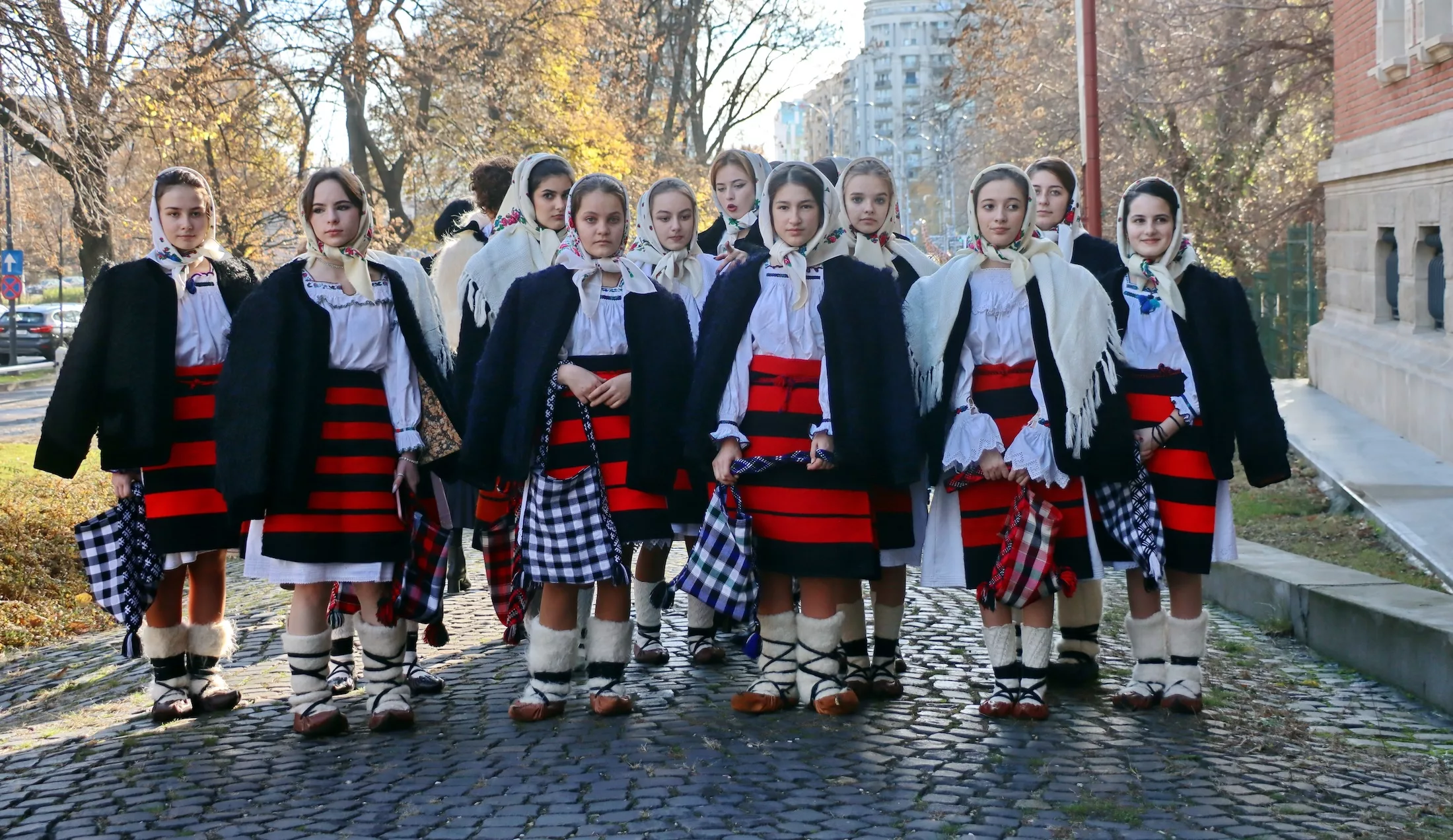
An interesting fact about Colindat is its deep roots in ancient pre-Christian rituals, where songs were sung to welcome the winter solstice and celebrate the renewal of nature. Today, it has evolved to incorporate Christian themes, yet some carols still carry echoes of its pagan origins.
Carolers are often rewarded for their songs with traditional treats like sweets, fruit, or sometimes money, as a token of appreciation and good luck. In rural areas, Colindat is also a rite of passage for young men, marking their transition into adulthood.
Bear Dance
The Bear Dance is a captivating and ancient ritual performed in Romania around New Year's, deeply rooted in the region's folklore and traditions. Participants, clad in real bear furs, mimic the movements and sounds of bears, dancing through the streets of villages and towns.
This powerful performance is believed to ward off evil spirits and ensure good fortune and health for the coming year. The dance is accompanied by traditional instruments, adding to the ceremony's vibrancy and mystical atmosphere.
An interesting fact about the Bear Dance is its origin, which dates back to the Dacian and Thracian tribes, ancient inhabitants of modern-day Romania. They revered the bear as a totem animal, associating it with strength and bravery.
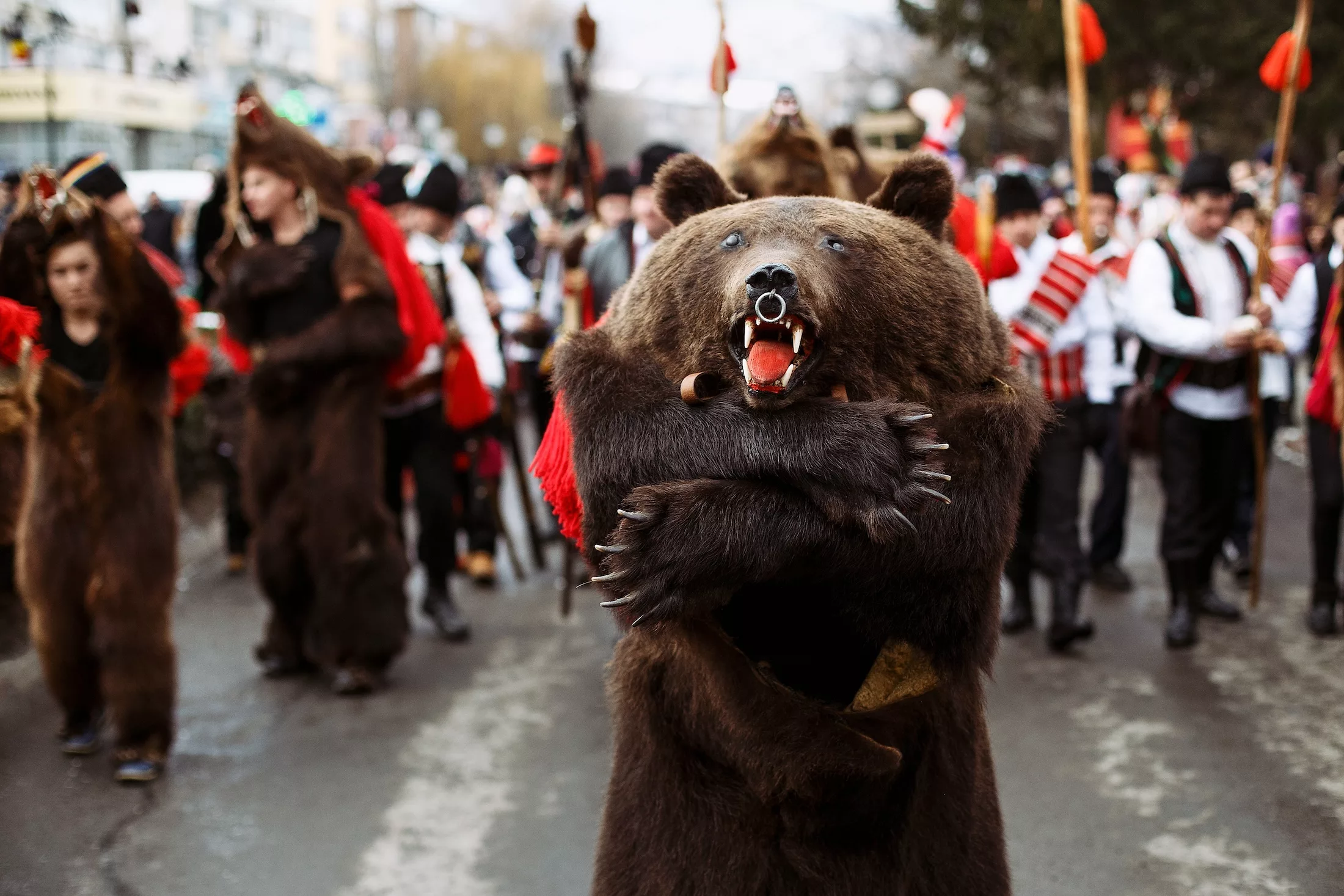
By embodying the bear, dancers symbolize the awakening of nature, chasing away the dark winter and welcoming the rebirth of spring.
Today, the Bear Dance is not only a ritualistic performance but also a popular cultural spectacle, attracting spectators from across Romania and beyond. It serves as a vivid reminder of the country's rich cultural tapestry, blending pagan traditions with modern festivities and continuing to play a vital role in Romanian celebrations of the New Year.
Capra
The Dance of the Goat, or "Capra," is a vibrant and traditional Romanian folk dance performed during the end-of-year festivities, particularly around Christmas and New Year's.
Participants don a striking costume that mimics the appearance of a goat, complete with a wooden head, decorated horns, and colorful ribbons. The dance is lively and acrobatic, with the "goat" often performing jumps and antics, mimicking the lively spirit of the animal it represents.
This dance is steeped in ancient agricultural traditions, where the goat symbolizes fertility, vitality, and prosperity. It's believed to bring good luck, bountiful harvests, and prosperity to the community in the coming year.
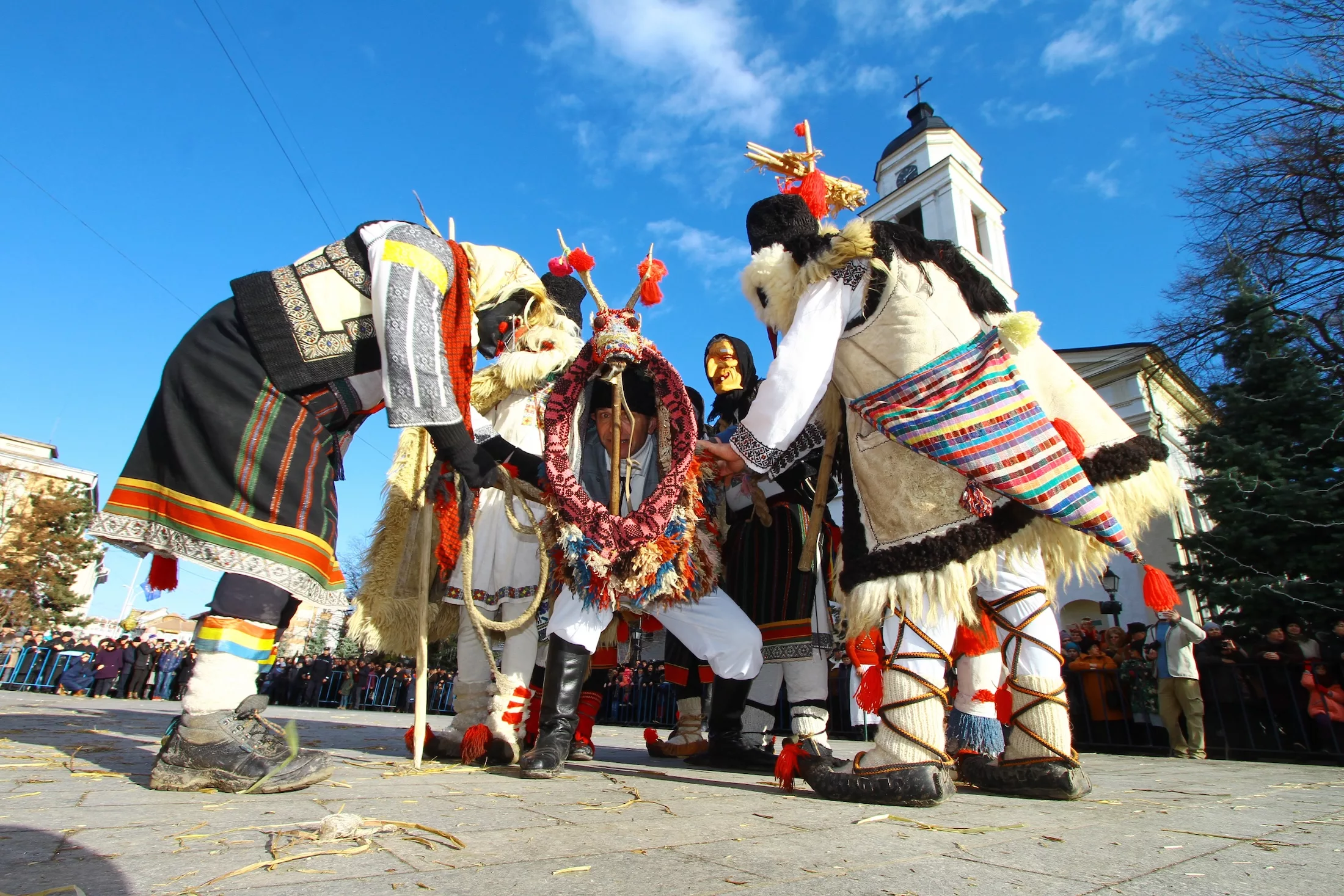
The Capra is often accompanied by a small ensemble of musicians and other characters from Romanian folklore, creating a festive procession that travels from house to house, bringing joy, entertainment, and blessings to the households they visit.
An interesting fact about the Dance of the Goat is its roots in pre-Christian rituals, showcasing the blend of pagan traditions with Christian celebrations in Romania.
This dance is a testament to the enduring nature of Romanian folk customs, illustrating the community's connection to its agrarian past and the cyclic nature of life and seasons.
Malanca Festival
The Malanca Festival is a vibrant and enthralling cultural event that takes place in various villages across Romania, especially noted in the region of Moldova, during the New Year's celebrations. This festival is a remarkable display of folklore, tradition, and community spirit, bringing to life the rich cultural tapestry of Romania.
At the heart of the Malanca Festival is the reenactment of traditional dances, theatrical performances, and customs that date back centuries, encapsulating the hopes, dreams, and aspirations of the Romanian people through the ages.
Participants, often young men, don elaborate costumes and masks representing various characters from folklore, such as bears, goats, horses, and gypsies, to perform dances and skits that are believed to bring good luck, health, and prosperity to the community in the coming year.
One of the most captivating aspects of the festival is the bear dance, where performers dressed in real bear skins parade through the streets, mimicking the bear's movements to drive away evil spirits and welcome the new year with strength and courage.
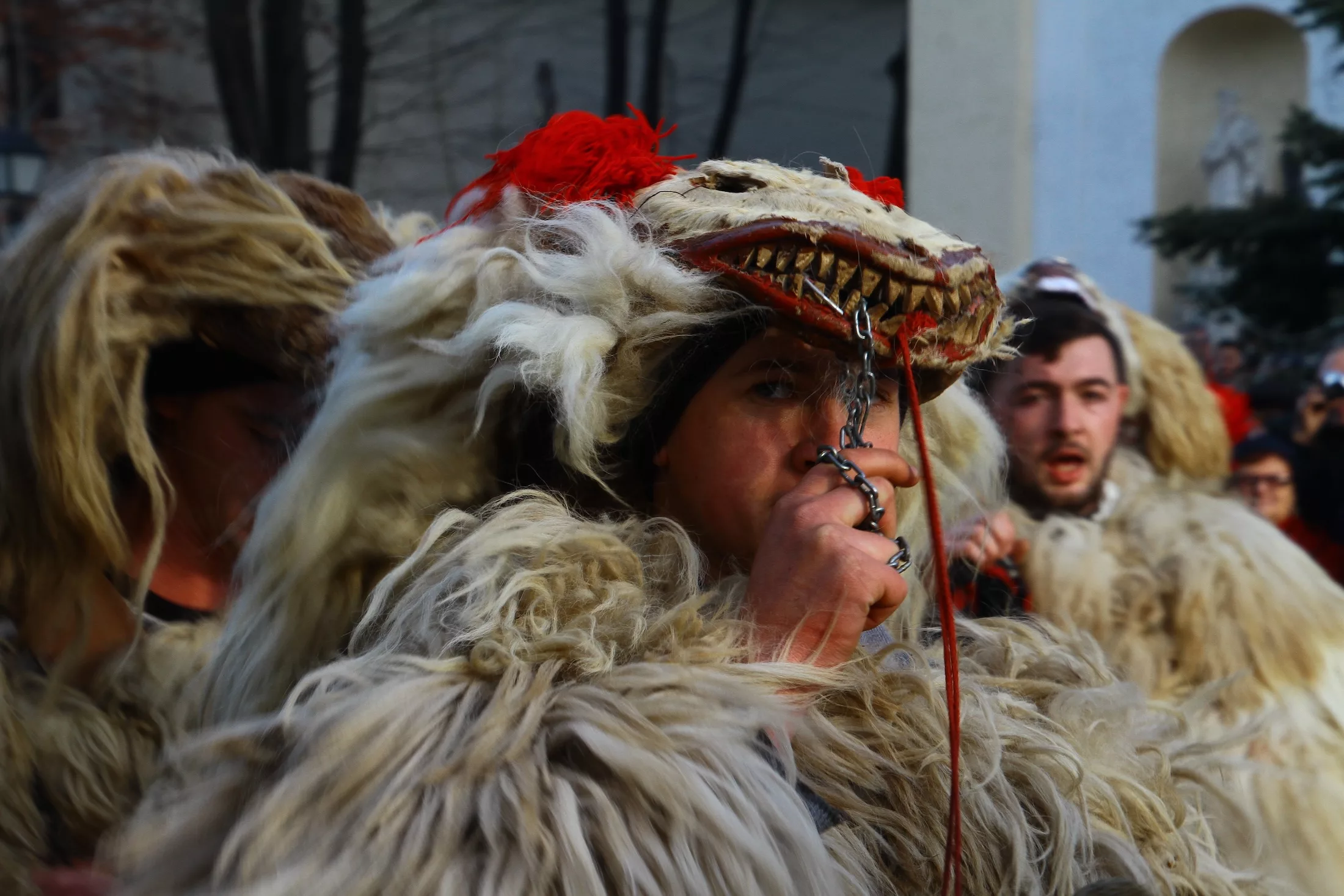
Another highlight is the goat dance, or "Capra," which involves a highly decorated costume with a wooden goat head, adorned with colorful ribbons, beads, and mirrors, symbolizing fertility and good harvests.
The festival is not just a display of performances; it is a communal gathering that strengthens the bonds within the community. Houses open their doors to the performers, who, in return, bless the households with verses and songs that are believed to bring fortune and ward off misfortune.
The exchange of gifts, particularly homemade food and drinks, adds to the warmth and conviviality of the event, making it a true celebration of community and shared heritage.
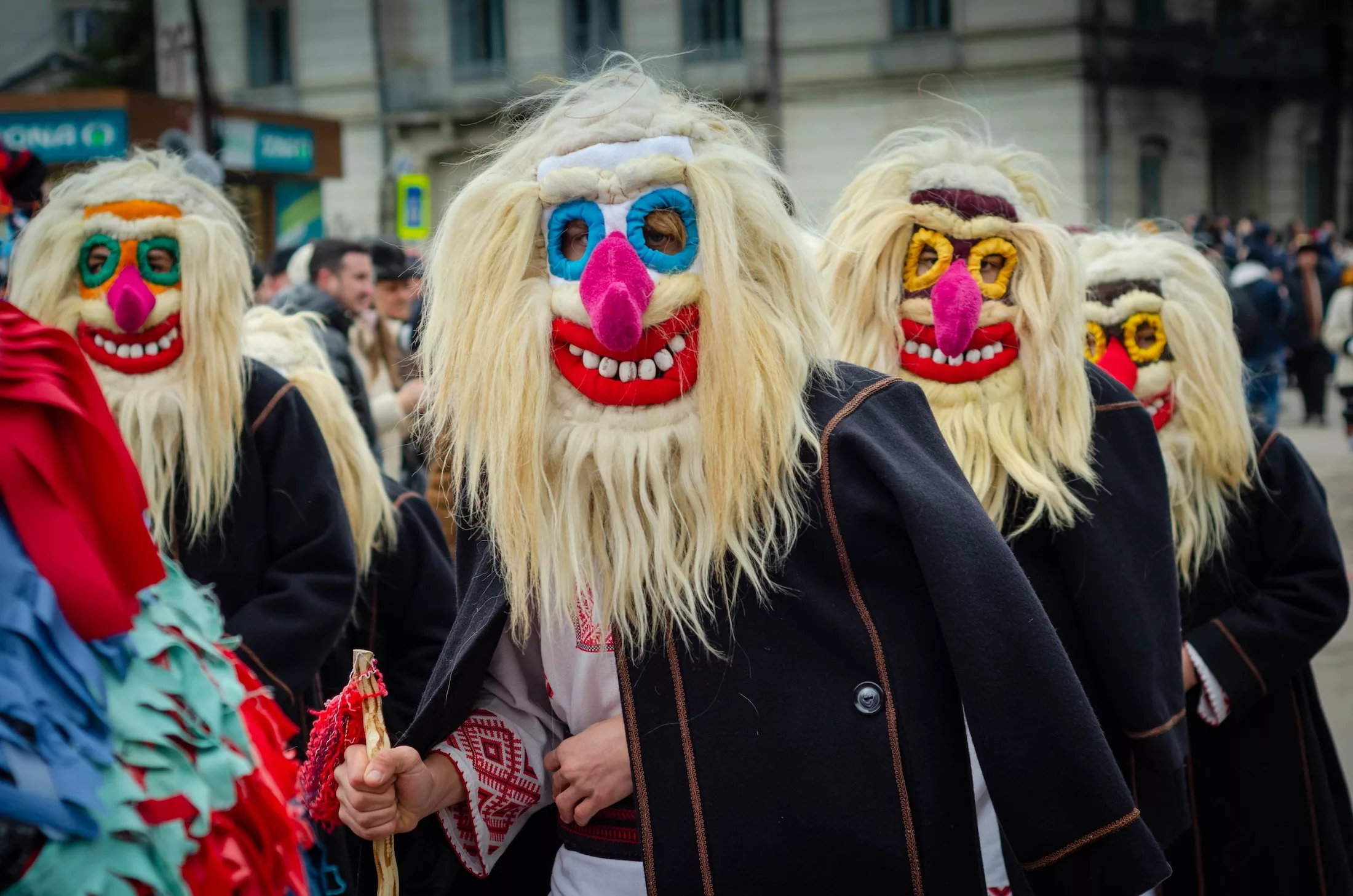
An interesting fact about the Mălănca Festival is its recognition by UNESCO as an intangible cultural heritage, highlighting its significance not only to Romania but to the cultural heritage of humanity as a whole.
This festival is a testament to the enduring power of tradition and the vital role it plays in fostering community identity, continuity, and solidarity in the face of a rapidly changing world.
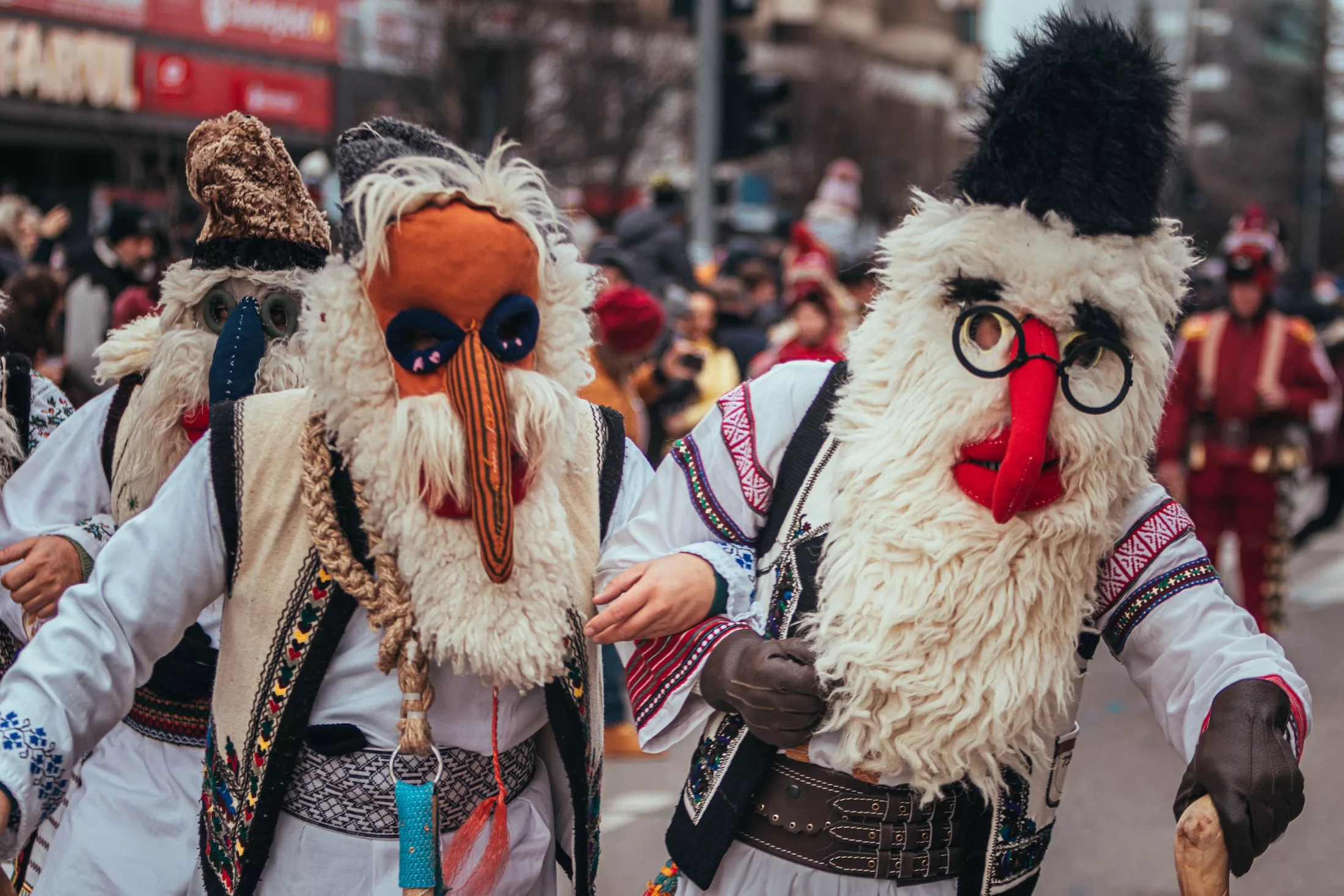
Rusalii and Dansul Călușarilor
Rusalii, also known as "Rusalii de Vară," is a Romanian Orthodox Christian holiday celebrated in late spring or early summer, typically 50 days after Easter. It commemorates the descent of the Holy Spirit upon the apostles and is a time of spiritual reflection, church services, and processions.
What makes Rusalii particularly interesting is the blending of Christian customs with ancient pagan rituals. Many of the traditions associated with Rusalii, such as the lighting of bonfires and the gathering of medicinal herbs, have their origins in pre-Christian beliefs. This fusion of old and new beliefs showcases Romania's rich cultural tapestry.
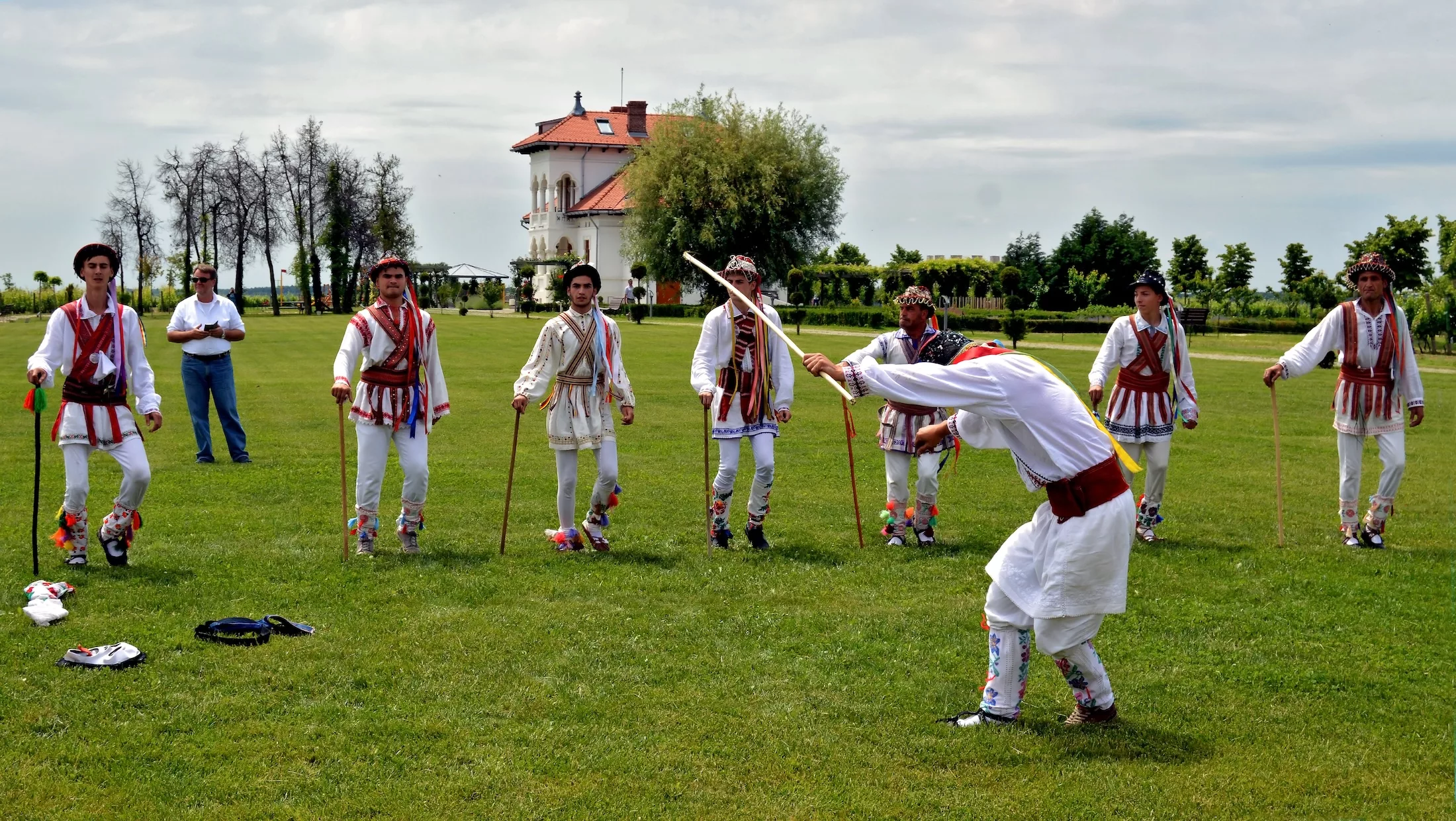
Dansul Călușarilor, on the other hand, is a traditional Romanian dance performed by a group of male dancers known as "călușari." This captivating dance has its roots in ancient pagan rituals meant to bring good fortune and ward off evil spirits.
It can be seen during events such as Rusalii (Pentecost) or other local religious celebrations.
The dancers wear elaborate costumes, often adorned with bells and ribbons, and perform intricate footwork accompanied by rhythmic music.
Dansul Călușarilor is not just a form of entertainment but also a display of physical and mental prowess. Interestingly, this dance has been recognized by UNESCO as an element of intangible cultural heritage, highlighting its importance in preserving Romania's heritage.
Împănatul boului
Împănatul boului is a captivating Romanian tradition deeply rooted in rural folklore and celebrated during the winter holiday season, particularly around Rusalii.
This unique ritual revolves around young men donning elaborate bull costumes made of straw, fur, and bells, transforming themselves into symbolic representations of powerful bulls. They then visit various households within their community, where they perform a spirited dance accompanied by lively music and chanting.
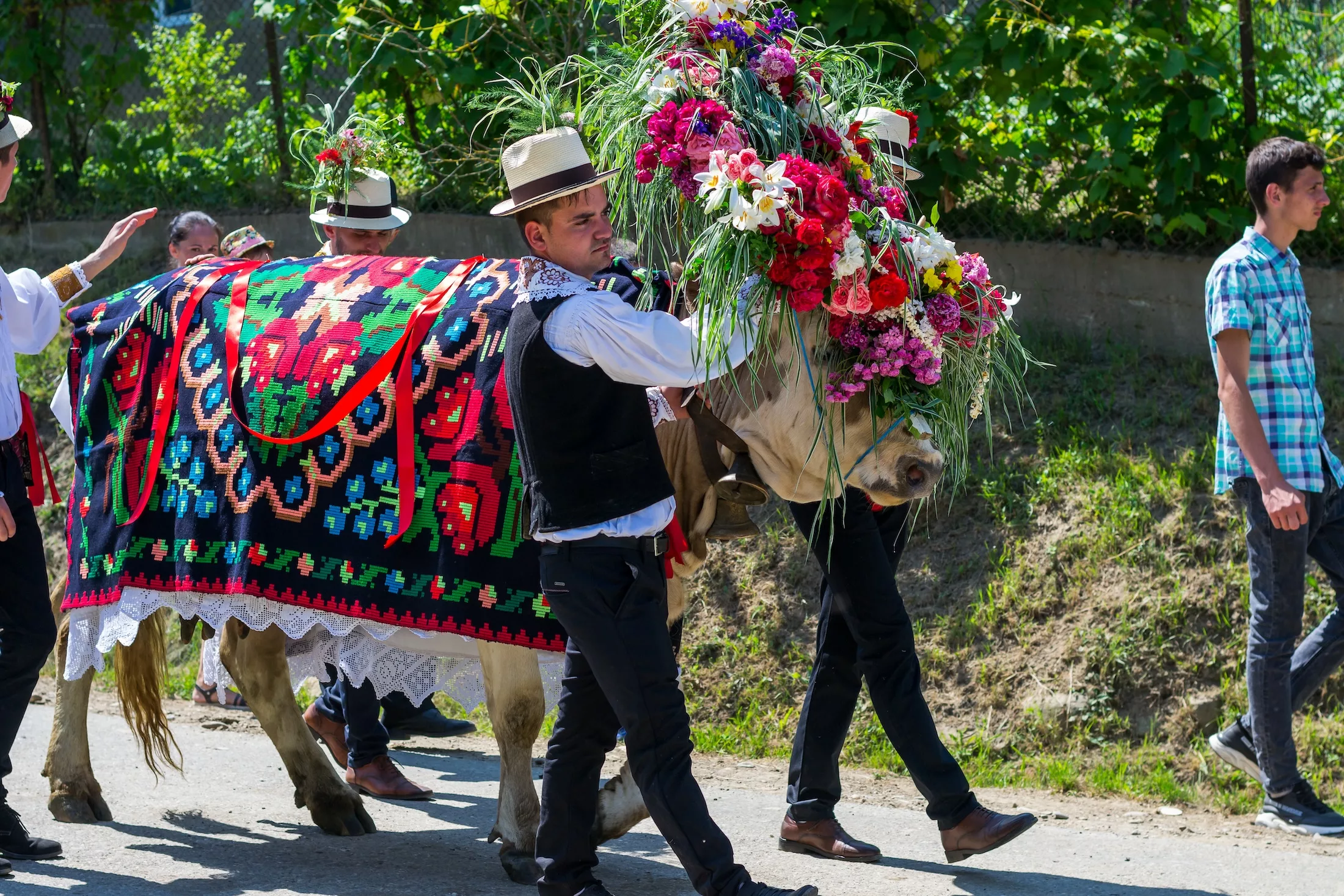
The performance is believed to bring good luck, prosperity, and fertility to the households for the upcoming year, while the sound of the bells is thought to ward off malevolent spirits.
After their dance, the bull dancers are welcomed with open arms by the homeowners, who offer blessings, traditional food, and drinks in exchange for well-wishes for the family's well-being and a fertile year ahead.
Sâmbra Oilor, known as "The Transhumance Festival"
Sâmbra Oilor, known as "The Transhumance Festival," is a vibrant Romanian celebration that honors the ancient practice of transhumance.
This festival marks the seasonal migration of sheep herds to and from the mountain pastures, a tradition deeply ingrained in Romania's rural culture.
Held typically in late spring or early summer, Sâmbra Oilor features a lively atmosphere with traditional music, dancing, and cultural performances.
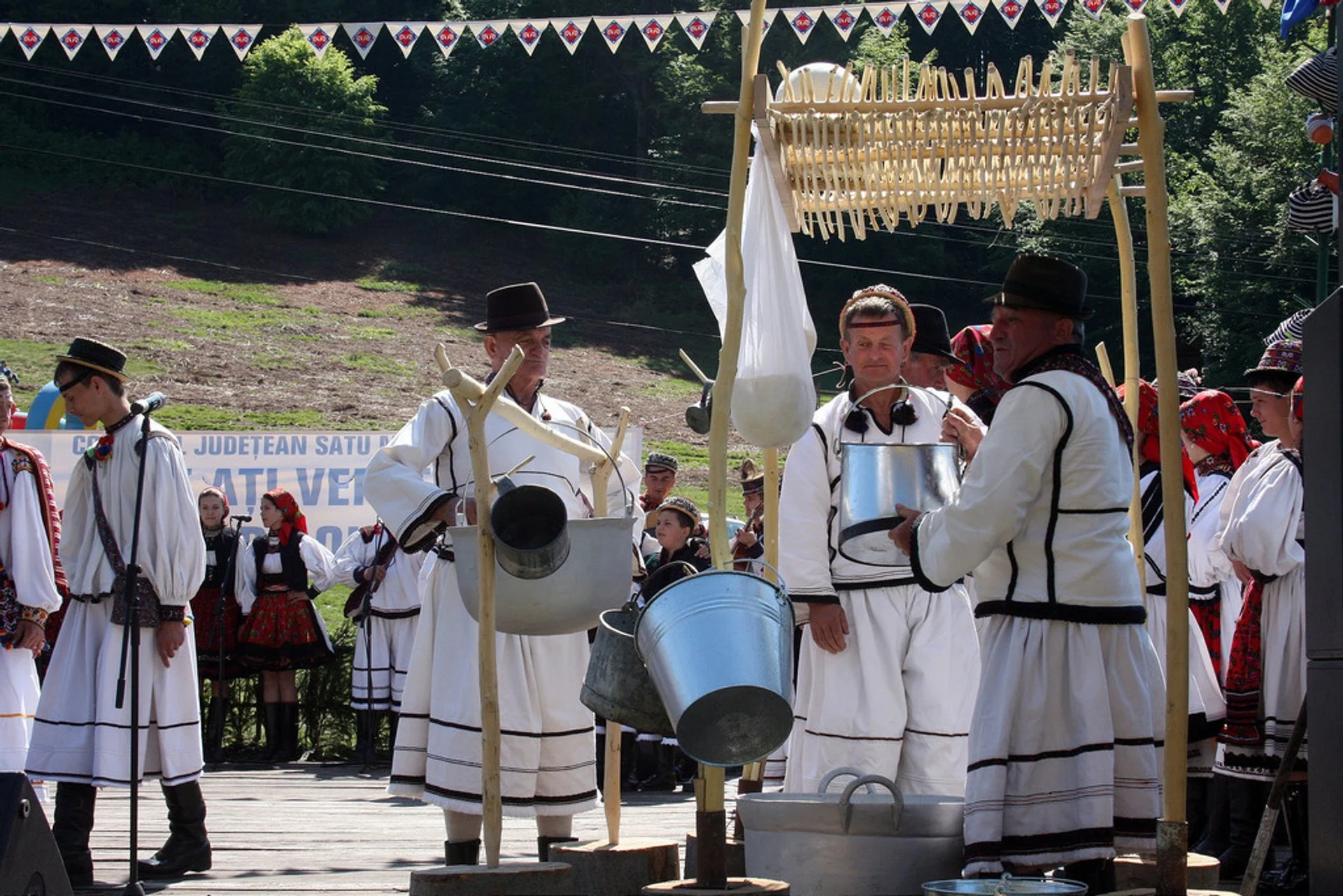
Attendees have the opportunity to savor authentic Romanian cuisine, with dishes often highlighting sheep cheese and lamb. Artisans and craftsmen showcase traditional handicrafts, providing a unique shopping experience.
Beyond the festivities, the festival serves as an educational platform to raise awareness about the significance of transhumance and its integral role in Romania's pastoral heritage.
Nedeia
Nedeia is a captivating mountain festival celebrated in Romania that seamlessly blends religious ceremonies with vibrant folk traditions.
This event typically takes place in the scenic regions of the Carpathian Mountains and is deeply rooted in the country's rural culture. Nedeia serves as a joyful gathering, bringing together communities to commemorate both religious and secular aspects of their heritage.
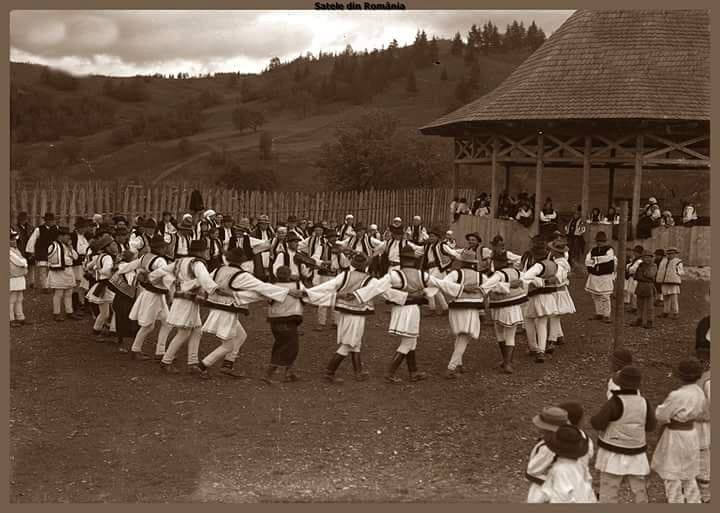
It features a rich tapestry of activities, including religious services, folk music performances, traditional dances, and communal feasting.
The festival showcases the intertwining of faith and folklore, with locals donning colorful traditional attire and participating in lively dances. Nedeia's communal feasting is a delightful highlight, where attendees can savor a variety of traditional Romanian dishes.
Doina
This genre has transcended generations
Doina is a poignant and soulful form of Romanian folk music that encapsulates profound emotions of love, longing, and loss. This musical genre holds a special place in the hearts of Romanians and serves as a powerful expression of their cultural identity.
Doina melodies are typically slow and melancholic, often played on traditional instruments such as the pan flute (nai), violin, accompanied by heartfelt, poetic lyrics.
These songs have the remarkable ability to convey a wide range of human experiences, from the depths of sorrow to the heights of joy.
Interestingly, Doina is known for its improvisational nature, allowing musicians and singers to express their feelings in a deeply personal and spontaneous manner.
Mărțișor
This ancient custom traces its roots to the Dacian culture
Mărțișor is a charming Romanian tradition celebrated on March 1st, symbolizing the eagerly awaited arrival of spring.
On this day, people exchange small, decorative trinkets primarily made of red and white threads, often crafted into intricate shapes like flowers or tiny figurines. These tokens, called "mărțișoare," are worn as badges or pendants throughout the month of March.
The red and white colors carry symbolic significance, with red symbolizing the beauty of life and white representing purity and the promise of renewal. Mărțișor not only marks the transition from winter to spring but also serves as a gesture of goodwill, hope, and good luck exchanged among friends and family.
Interestingly, this tradition has ancient origins dating back thousands of years to the Dacian culture, demonstrating Romania's deep connection to its cultural heritage.
The legend of Mărțișor tells the story of Baba Dochia, who represented winter's harshness, and March, symbolizing spring's arrival.
Baba Dochia attempted to deceive March by wearing twelve woolen coats, but March's warm sunbeam exposed her trick. As she shed her coats, spring blossomed, and Baba Dochia eventually turned into stone.
Mărțișor, with its red and white threads, marks this transition from winter to spring, symbolizing hope and renewal. The tradition of exchanging Mărțișoare celebrates the victory of spring over winter's hardships and is deeply cherished in Romania.
dragobete
An ancient pagan tradition
Dragobete, celebrated on February 24th, is Romania's equivalent of Valentine's Day, blending ancient Dacian traditions with Roman mythology.
This joyful tradition marks the arrival of spring and celebrates love. People use this day to express affection for their loved ones and engage in playful customs, like flower-picking and love token exchanges, believed to bring happiness.
Interestingly, no work is allowed on Dragobete; it's a time to relax and embrace nature's rebirth. Some regions believed in the magical properties of snowdrops, collected for their healing qualities.
In Romanian folklore and mythology, Dragobete is associated with a character named Dragobete or Zburătorul (the "Flier" or "The One who Soars"). This character represented the idea of love, attraction, and the return of spring.
Over time, as Christianity spread in Romania, elements of Christian beliefs and practices merged with the existing pagan traditions, resulting in Dragobete becoming associated with Saint Dragobete, who is considered the protector of lovers.
Beyond romantic love, Dragobete emphasizes the significance of love in all relationships, making it a beautiful celebration that reflects Romania's rich cultural heritage and the promise of a brighter season ahead.
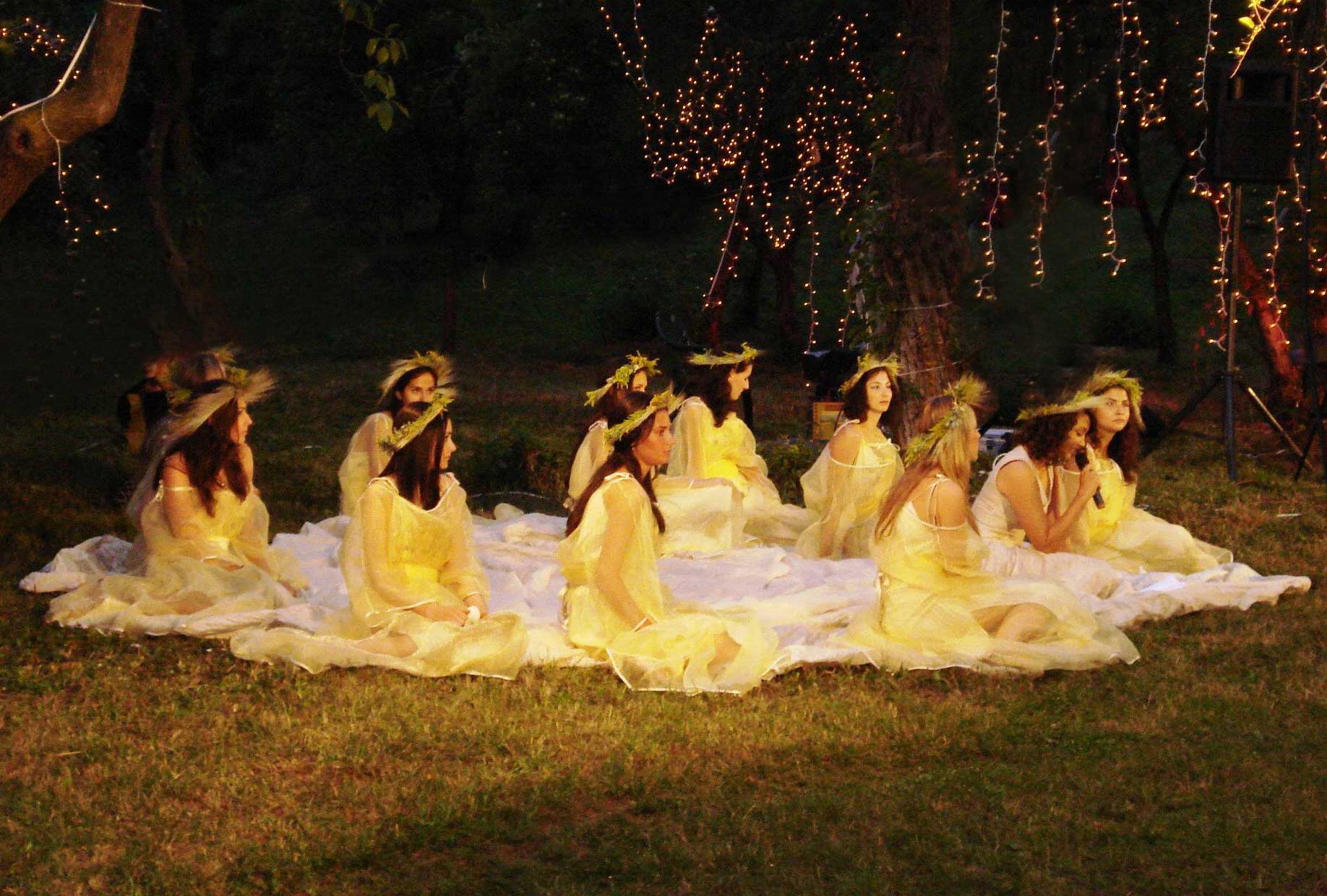
Sânziene
Sânziene is a captivating Romanian tradition celebrated on June 24th, marking the summer solstice and the blooming of wildflowers known as "sânziene" (lady's bedstraw or St. John's wort).
This ancient custom is a joyful celebration of nature and femininity. People gather in the countryside to pick sânziene flowers, believed to have magical properties.
These flowers are then woven into intricate wreaths, which are worn as crowns or hung on doors to protect against evil spirits. Folk dances, rituals, and festivities accompany the celebration, with an emphasis on matchmaking and the romantic aspects of summer.
It's a remarkable blend of pagan and Christian influences, highlighting Romania's deep cultural roots and connection to the changing seasons.
Interestingly, the name "Sânziene" is derived from "Sfânta Elena," meaning Saint Elena, which reflects the Christian overlay on this ancient tradition.

